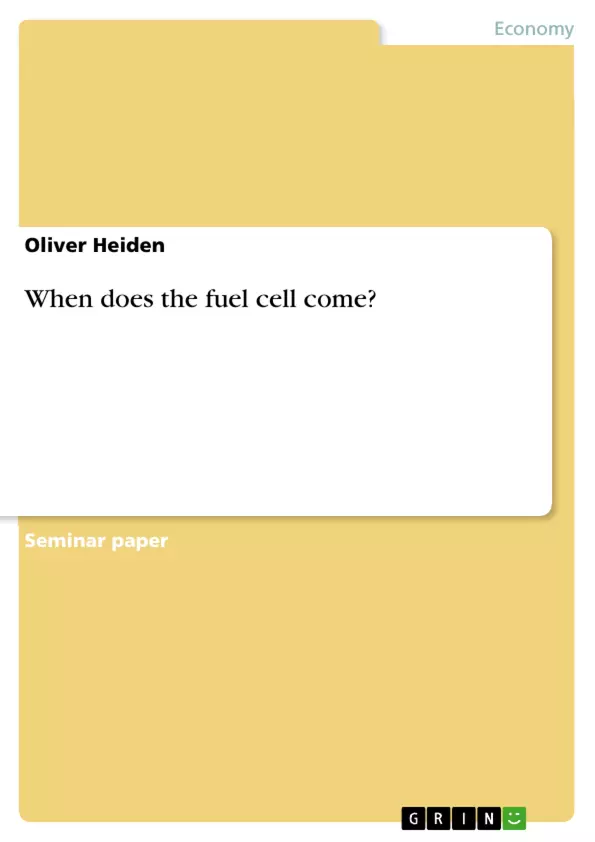“The fuel cell is a higher civilisation performance than the steam engine and will soon banish the Siemens generator into the museum.” predicted Wilhelm Ostwald, Nobel price winner for chemistry at the second meeting of the German Electro-technical Society in 1884 in Leipzig. But during more then hundred years passed by in the meantime, the discovery did not turn out to be the ‘engine of the future’. This fact raises at least two separate questions in mind. Firstly, why fuel cells did not enter yet the market, and secondly, when do they really supposed to do so? In other terms, when does this hundred years old invention finally become an innovation?
Inhaltsverzeichnis (Table of Contents)
- Introduction.
- Methodology
- The fuel cell technology and its applications.
- Motivations of radical change
- The potentials of the fuel cell technology, technical push and market pull.
- The innovation process...
- The stage of the innovation process.
- Remaining challenges in the technological development.
- The case of the fuel and its environmental and technical impacts
- Progress made by the automotive business .....
- Conclusion.....
- References.
Zielsetzung und Themenschwerpunkte (Objectives and Key Themes)
This paper seeks to answer the question of why fuel cells haven't yet entered the market and when they are expected to do so, specifically focusing on the automotive industry. The analysis will be conducted at the industrial level, examining the technical change within the established automotive industry and identifying key drivers for the shift from traditional internal combustion engines to fuel cells.
- The role of technological push and market pull in driving the adoption of fuel cell technology.
- The stage of the innovation process for fuel cell technology in the automotive sector.
- The challenges and opportunities presented by the fuel cell technology and its applications.
- The potential impact of fuel cell technology on the automotive industry and the wider energy landscape.
Zusammenfassung der Kapitel (Chapter Summaries)
- Introduction: The paper introduces the topic of fuel cell technology and its potential to revolutionize the automotive industry. It highlights the long incubation period of the technology and explores the reasons behind its slow adoption, despite its potential for wide-ranging applications.
- Methodology: The paper outlines its methodological approach, drawing upon the cyclical model of technological changes and the theory of the dominant design. This framework will be used to analyze the innovation process and identify the driving forces behind the adoption of fuel cell technology.
- The fuel cell technology and its applications: This chapter provides a brief description of the fuel cell technology, its historical development, and its potential applications in various sectors. It explains the basic principles of fuel cell operation and the advantages it offers compared to conventional energy sources.
- Motivations of radical change: This section examines the driving forces behind the adoption of fuel cell technology, focusing on the interplay between technological push and market pull factors. It discusses the potential of fuel cells to address existing challenges, particularly in the automotive industry.
- The innovation process: This chapter delves into the stages of the innovation process for fuel cell technology, analyzing the current stage and identifying potential obstacles that may hinder its commercialization. It explores the challenges related to the technological development, the fuel source, and the integration of fuel cell technology into existing automotive systems.
Schlüsselwörter (Keywords)
The key terms and focus topics of this paper include fuel cell technology, automotive industry, technological innovation, dominant design, technological discontinuity, market pull, technical push, innovation process, environmental impact, and energy efficiency.
- Arbeit zitieren
- Dipl.-Volkswirt (BA) Oliver Heiden (Autor:in), 2005, When does the fuel cell come?, München, GRIN Verlag, https://www.grin.com/document/62930



